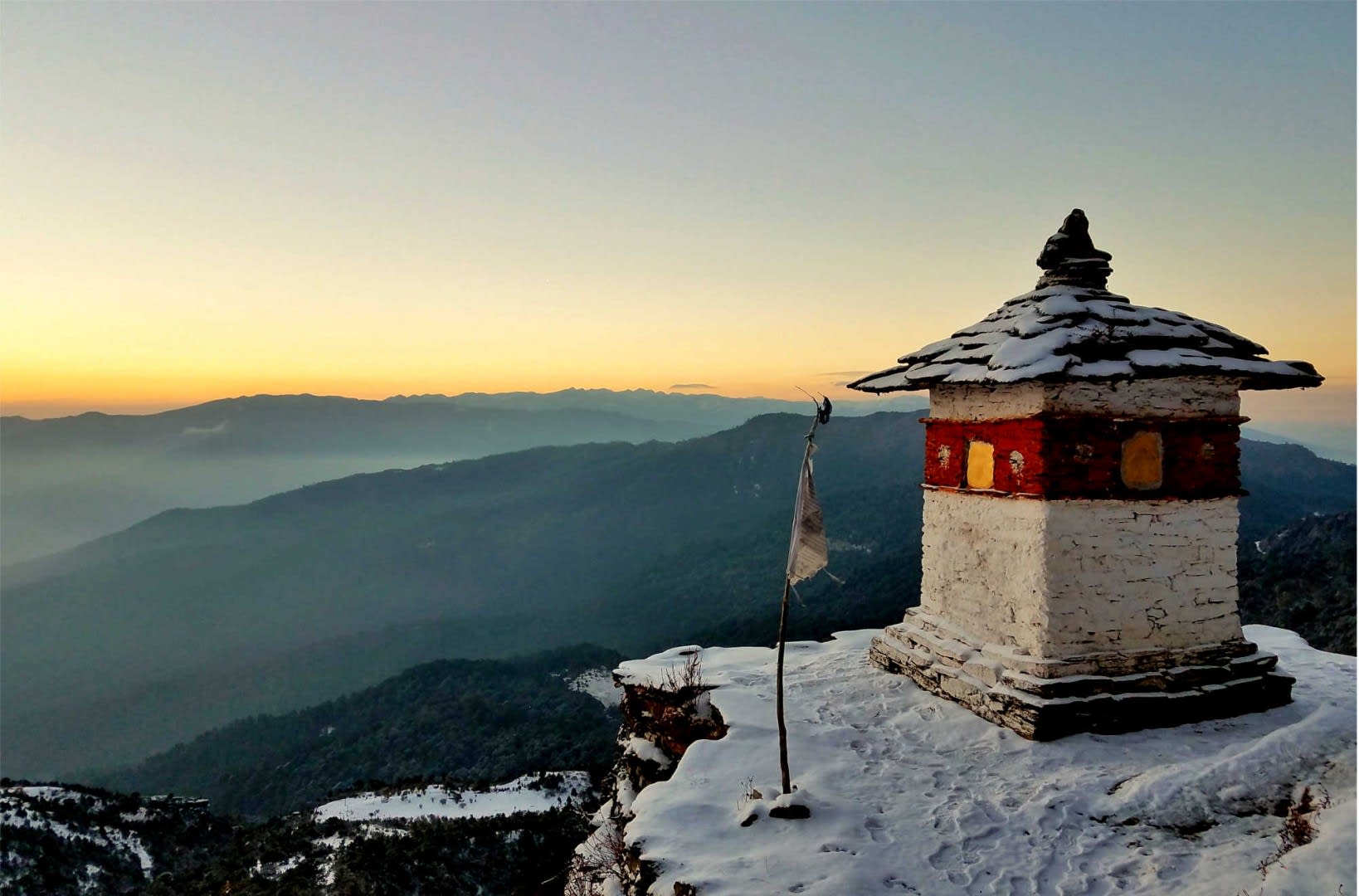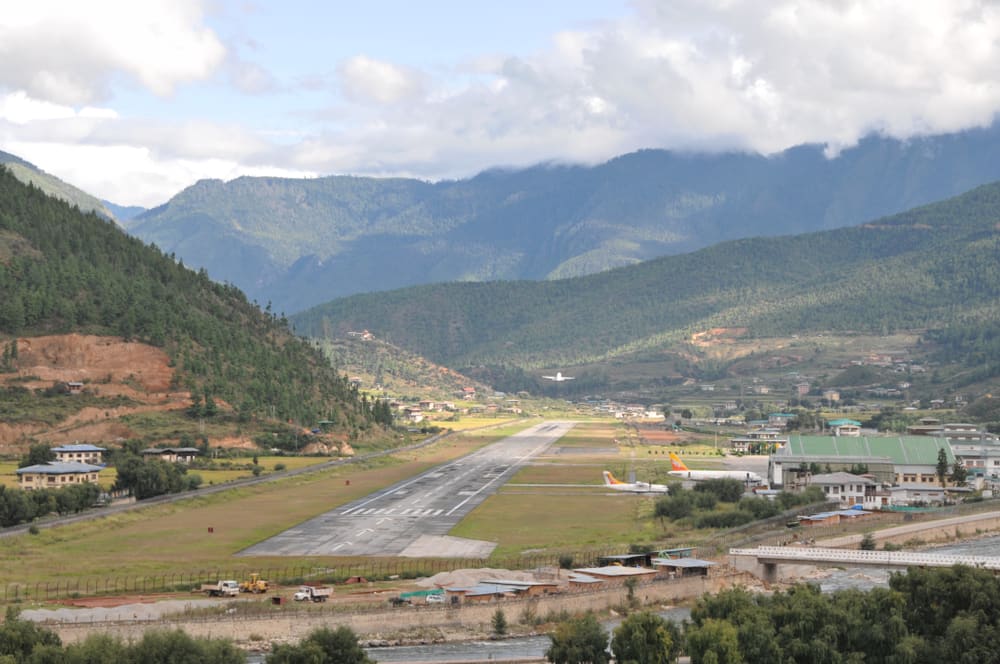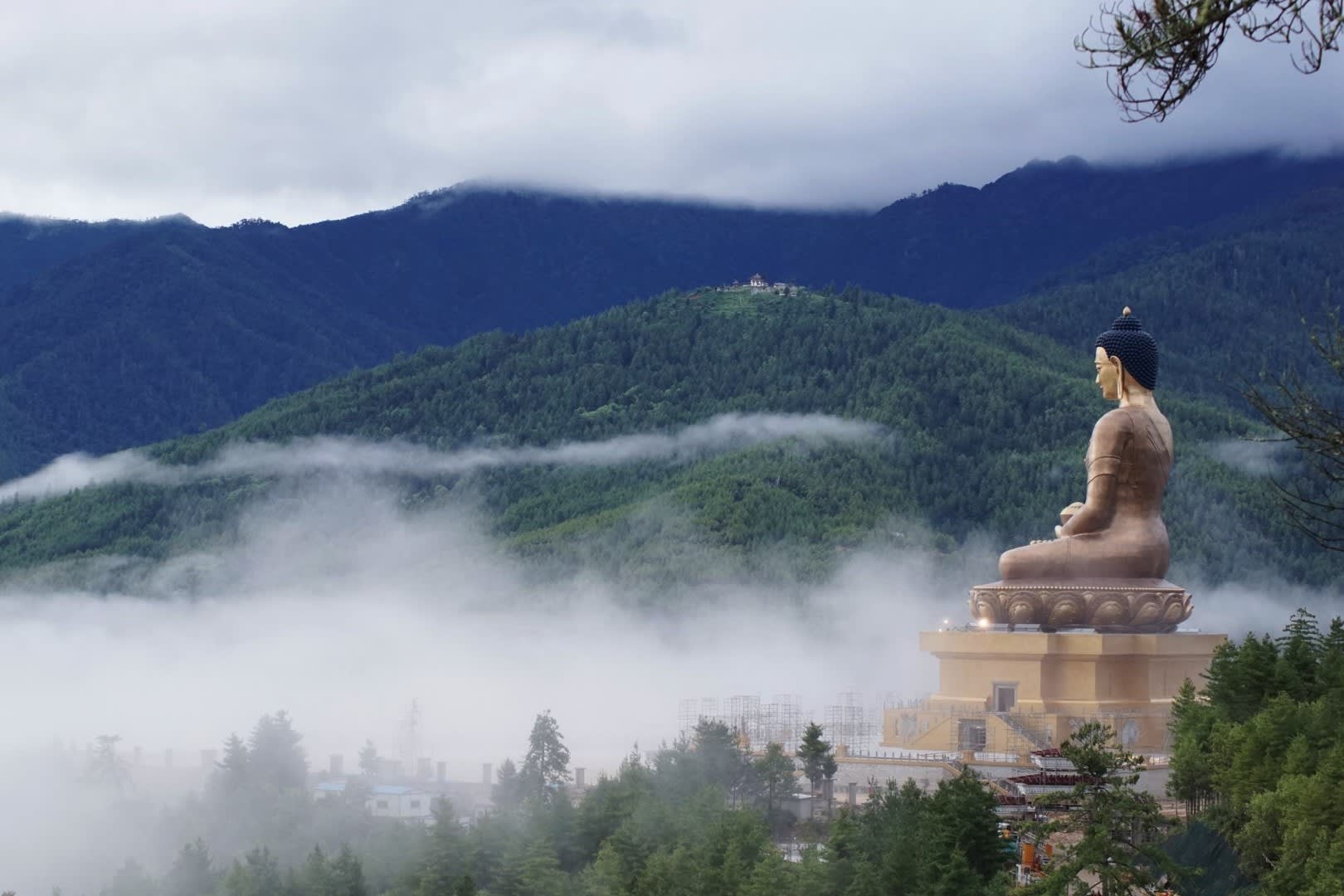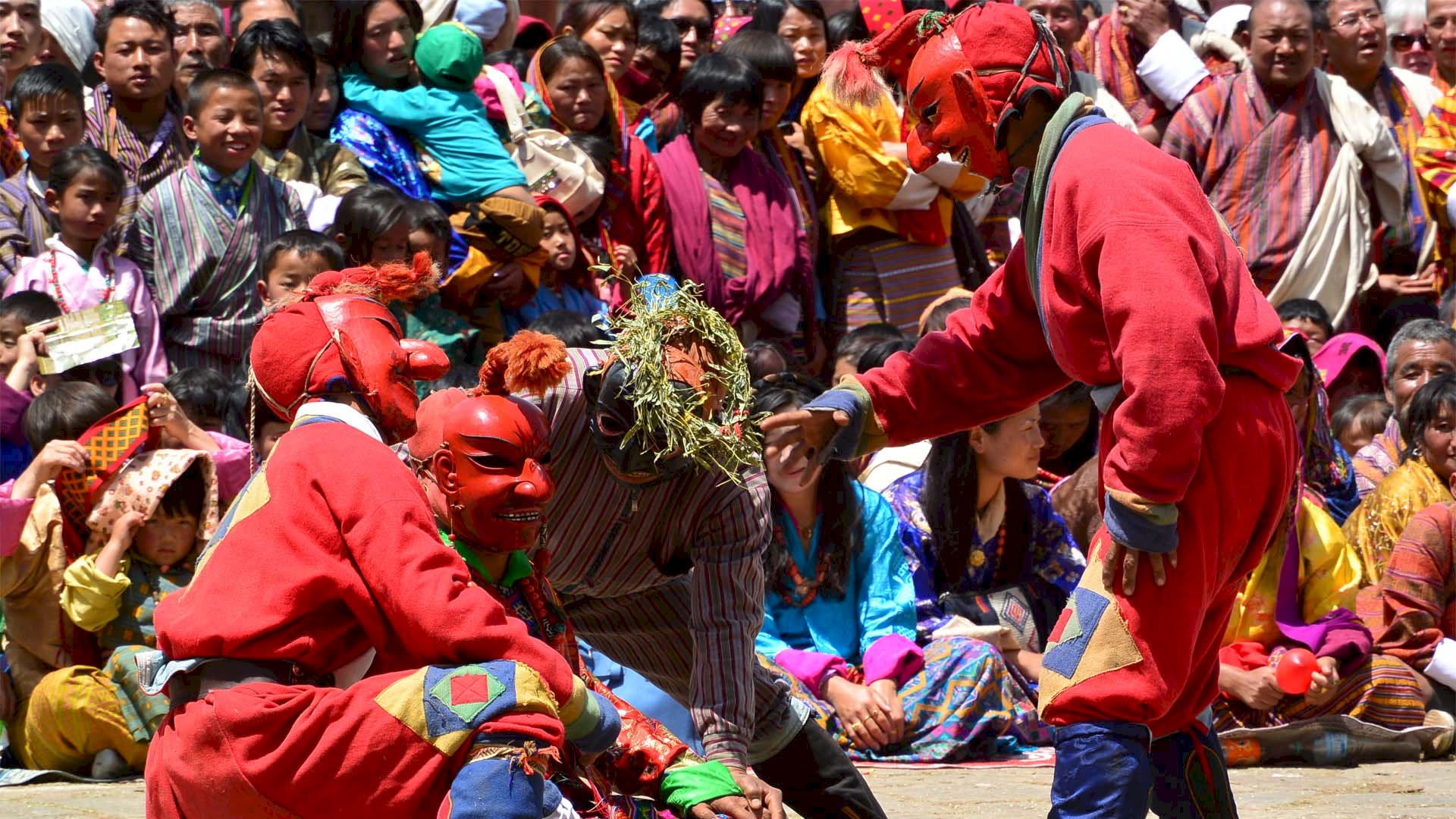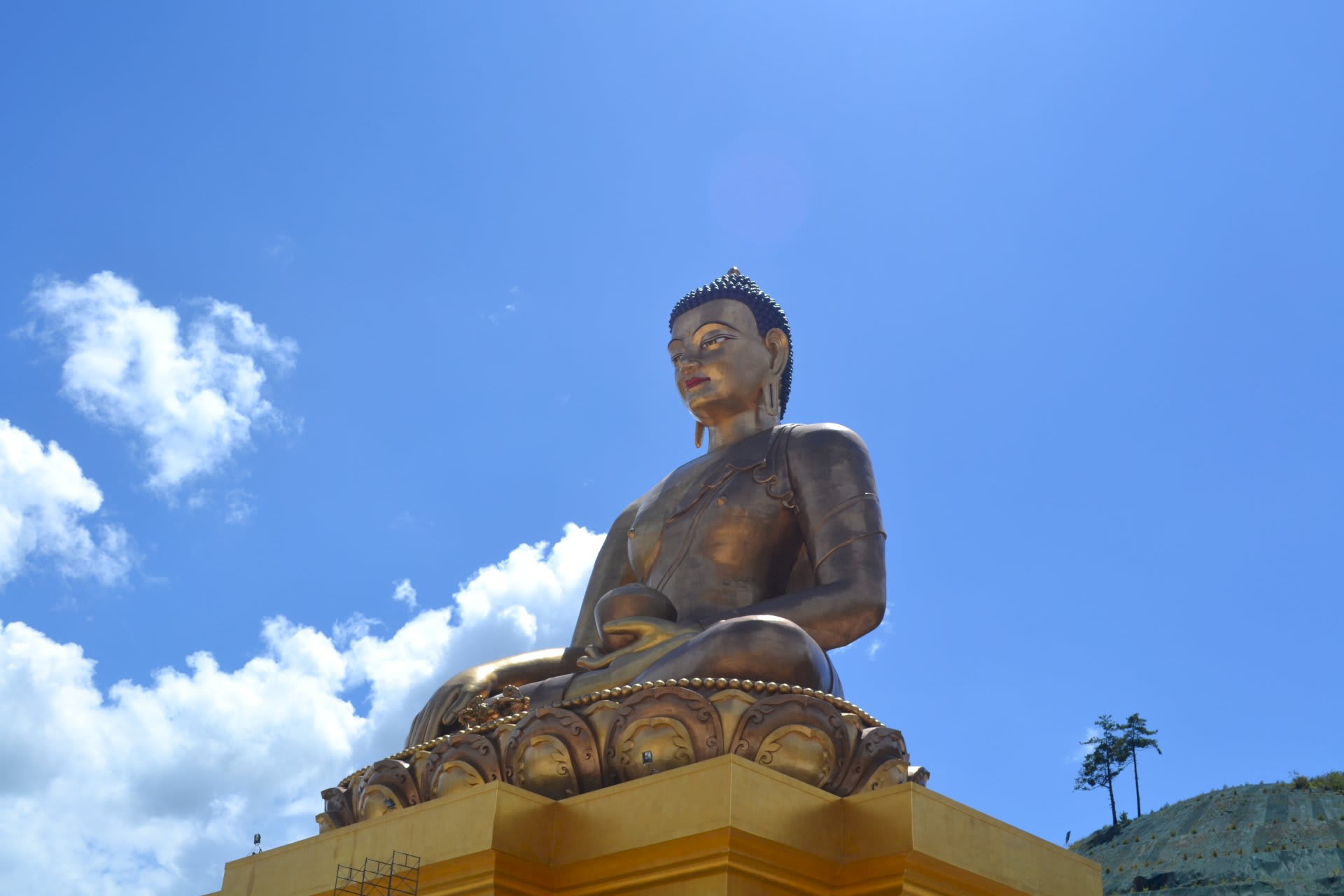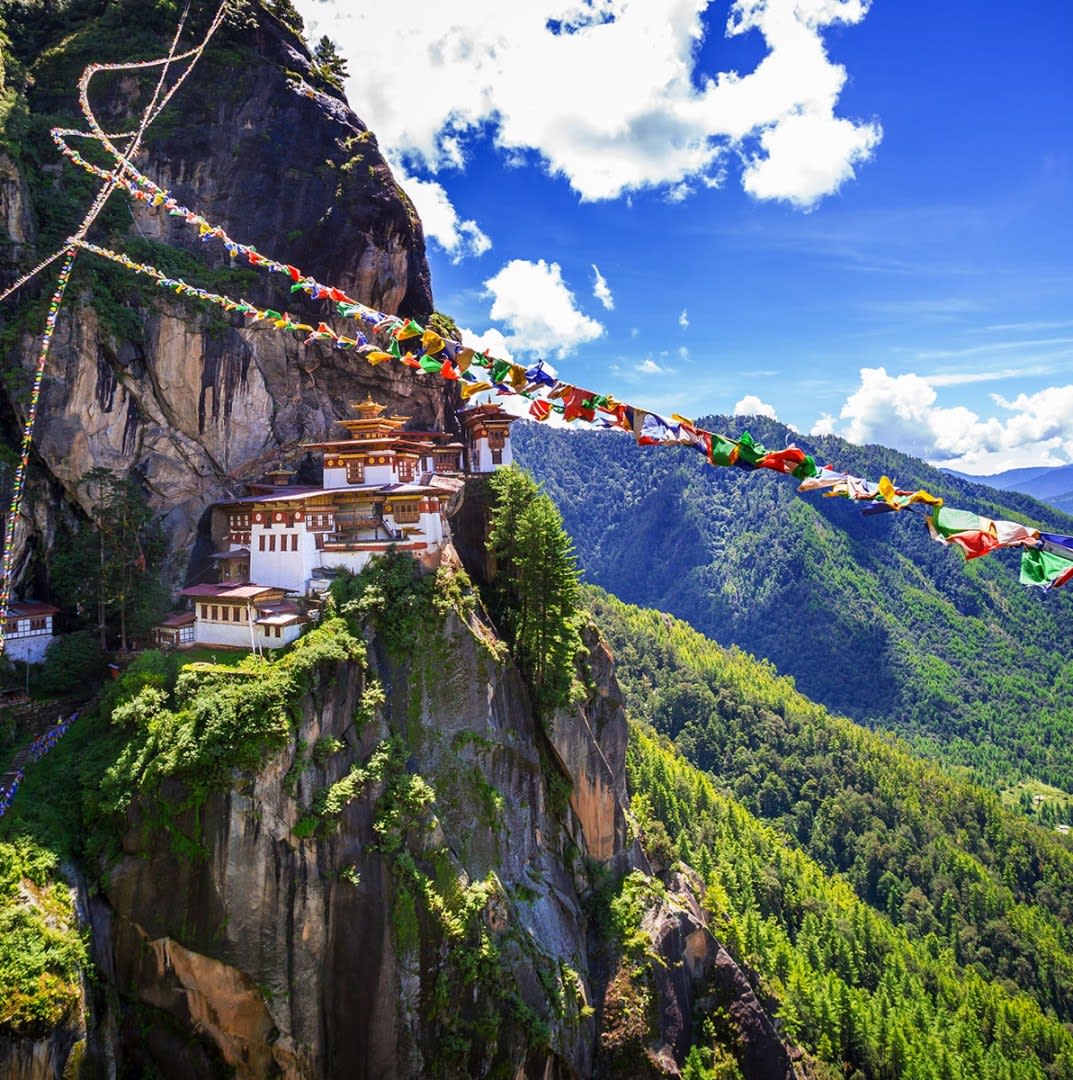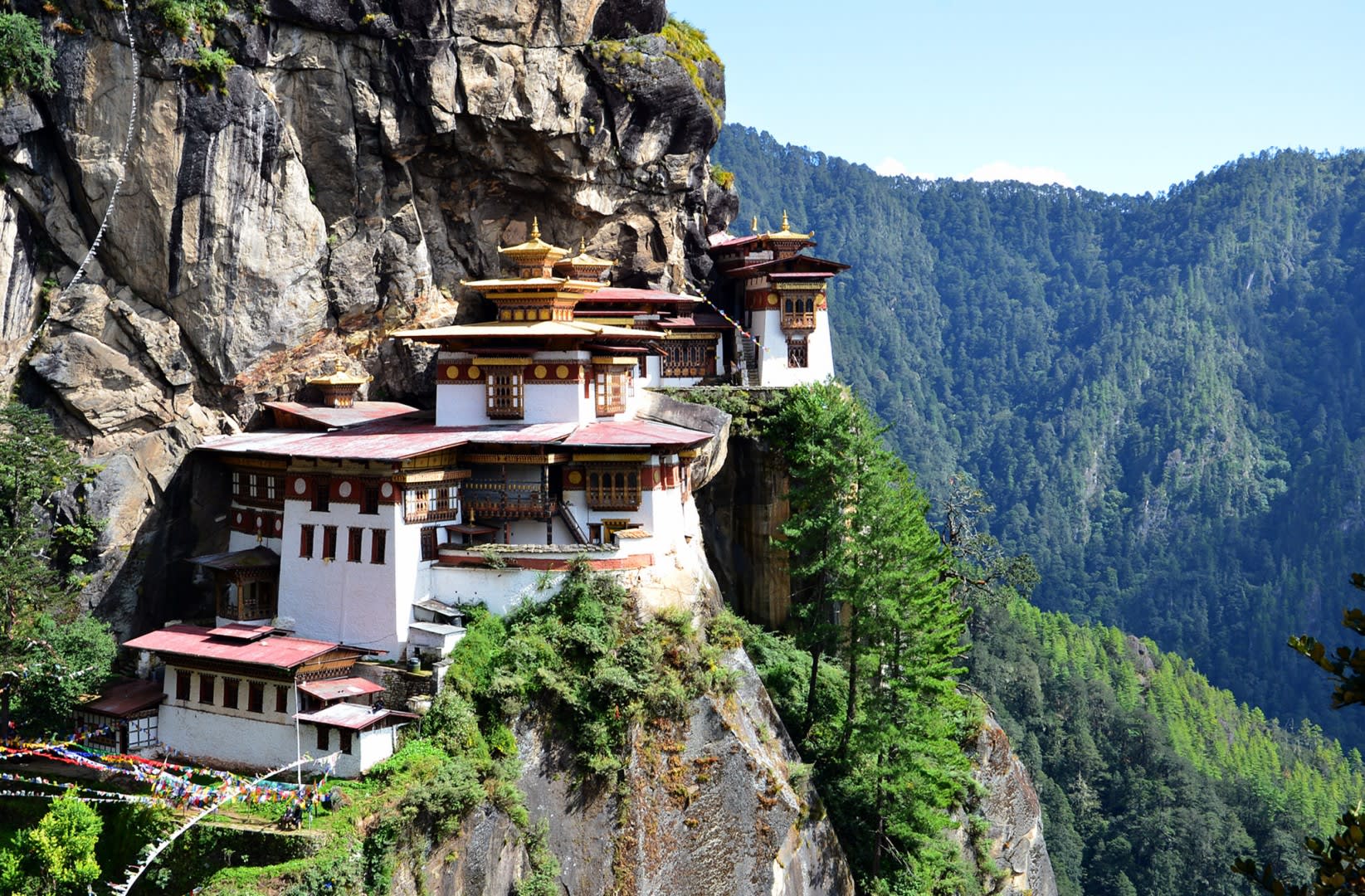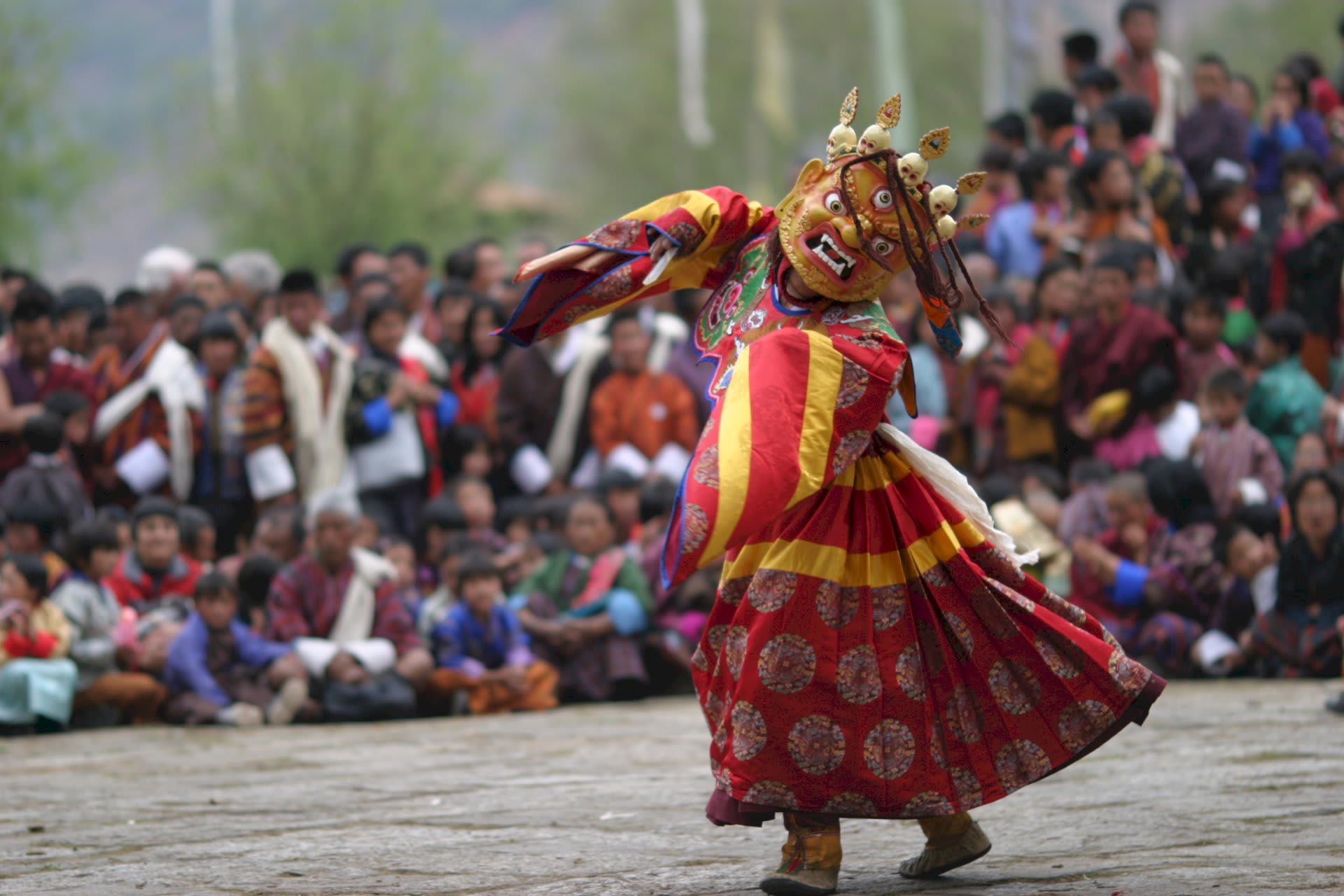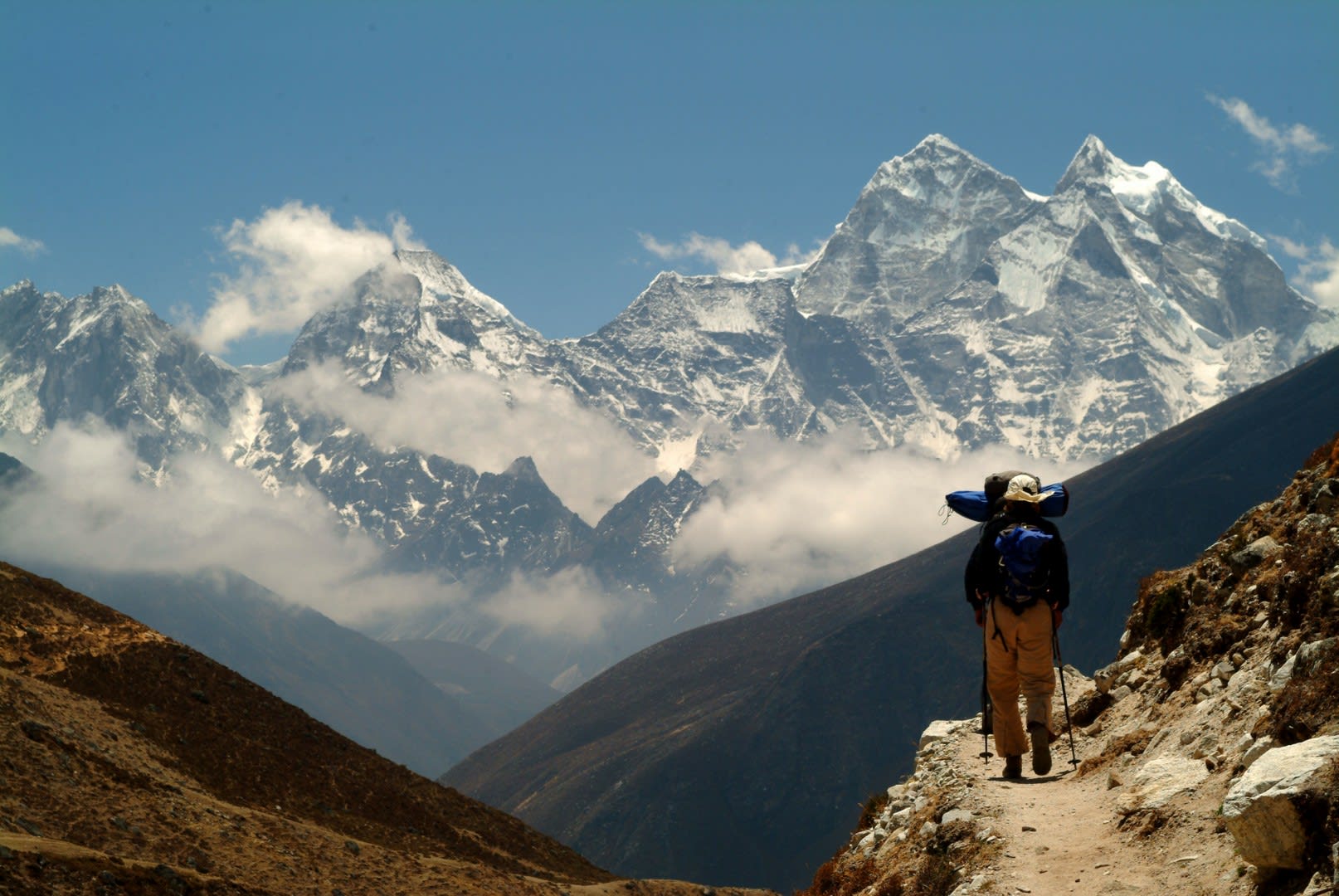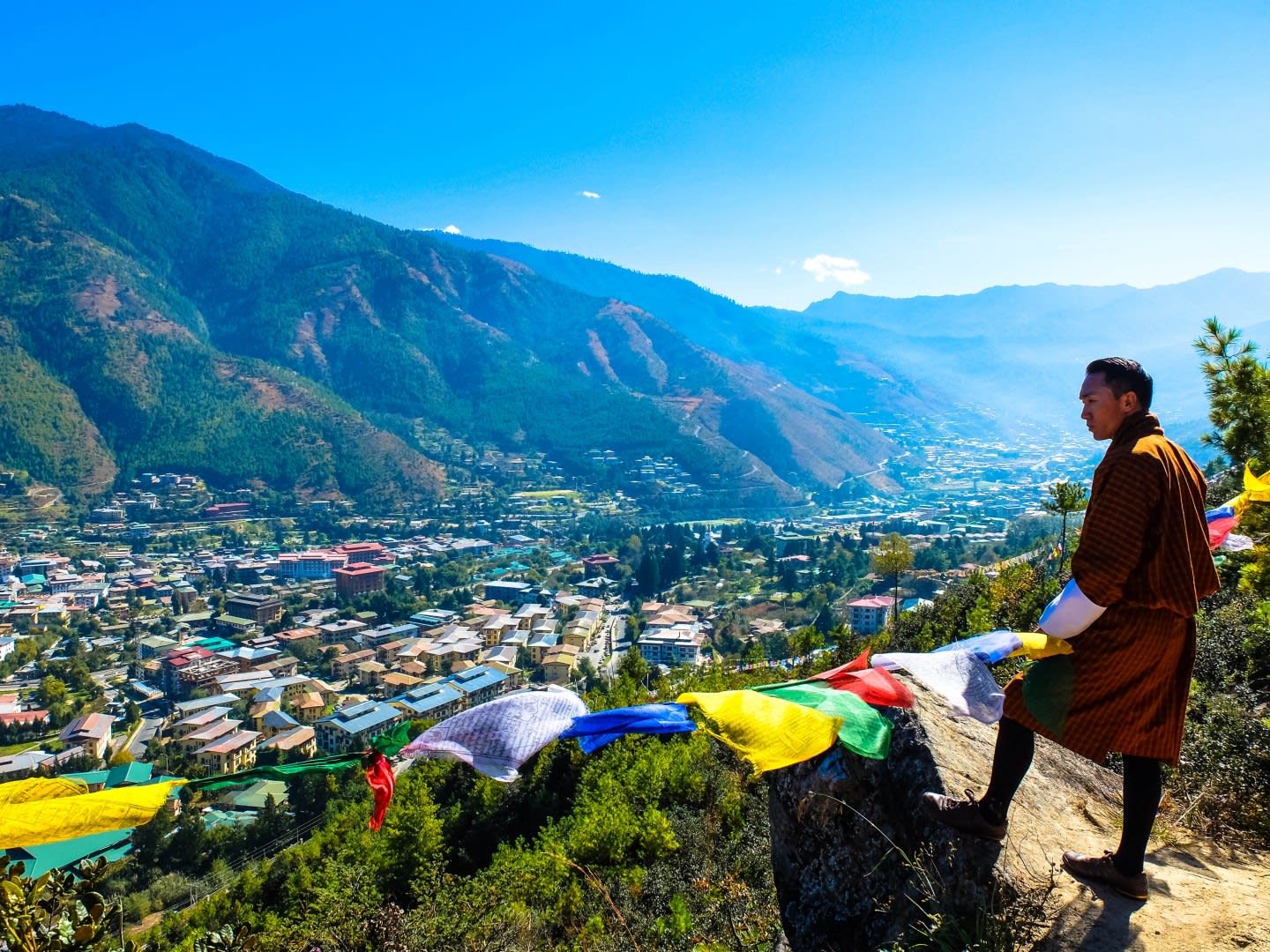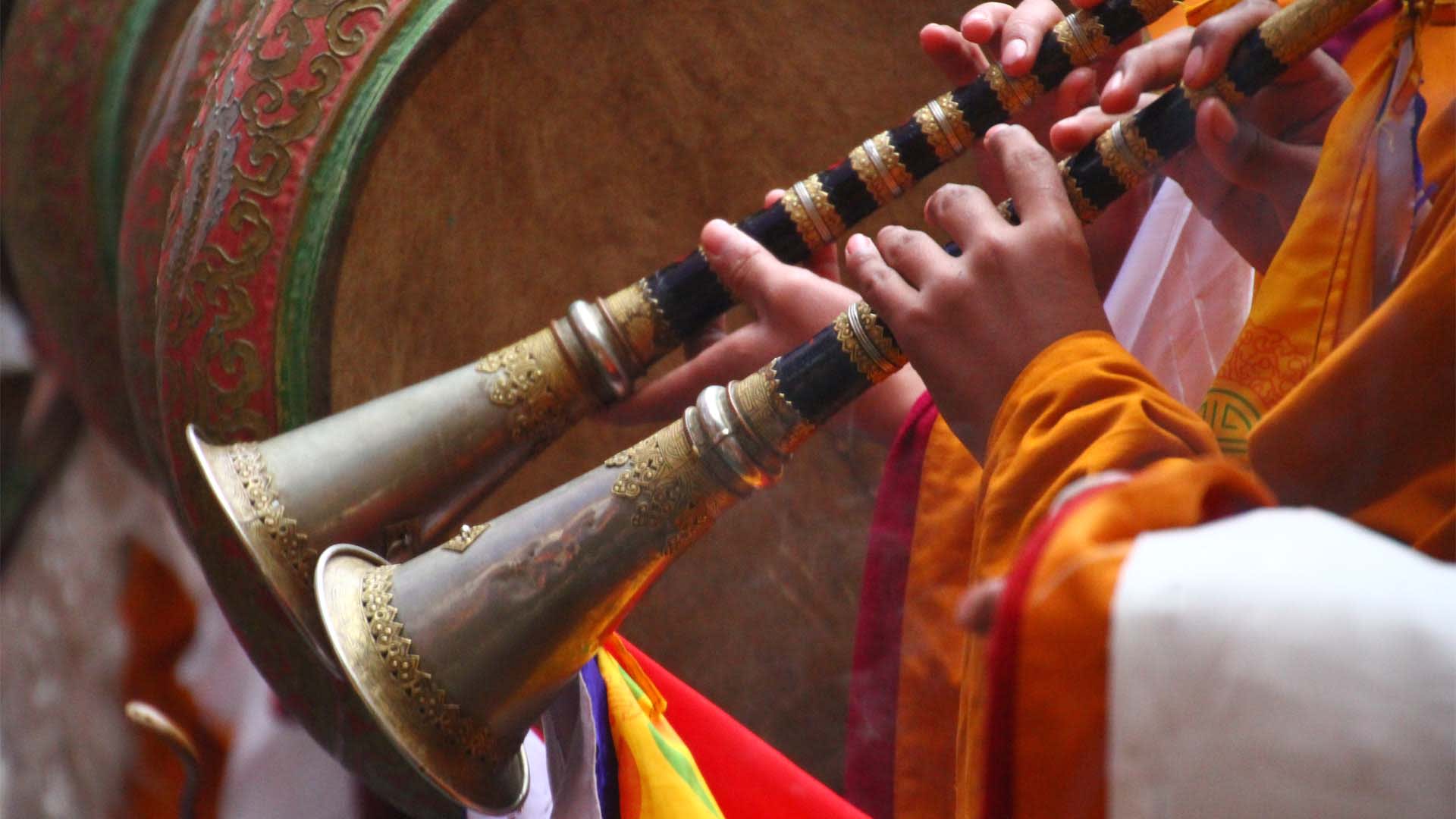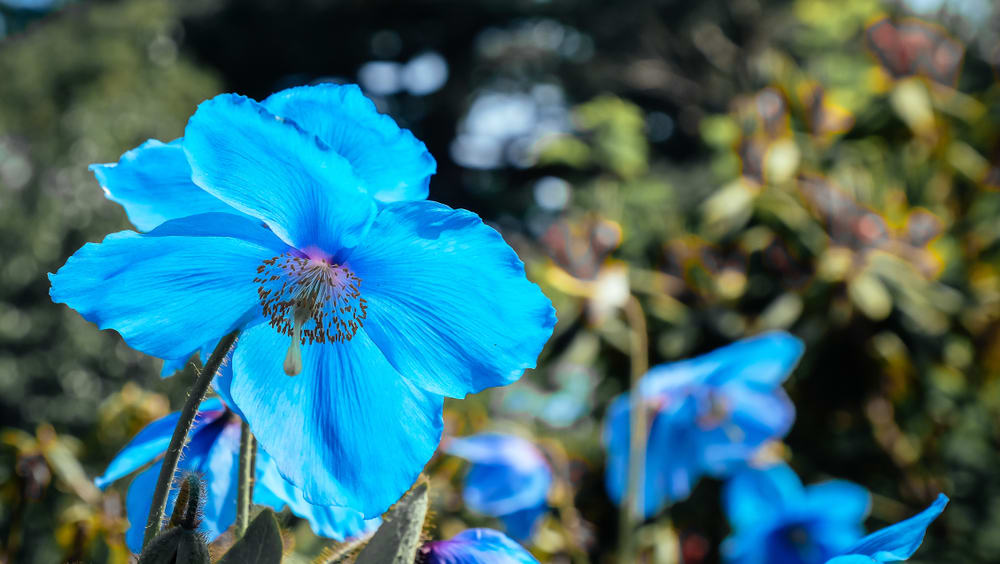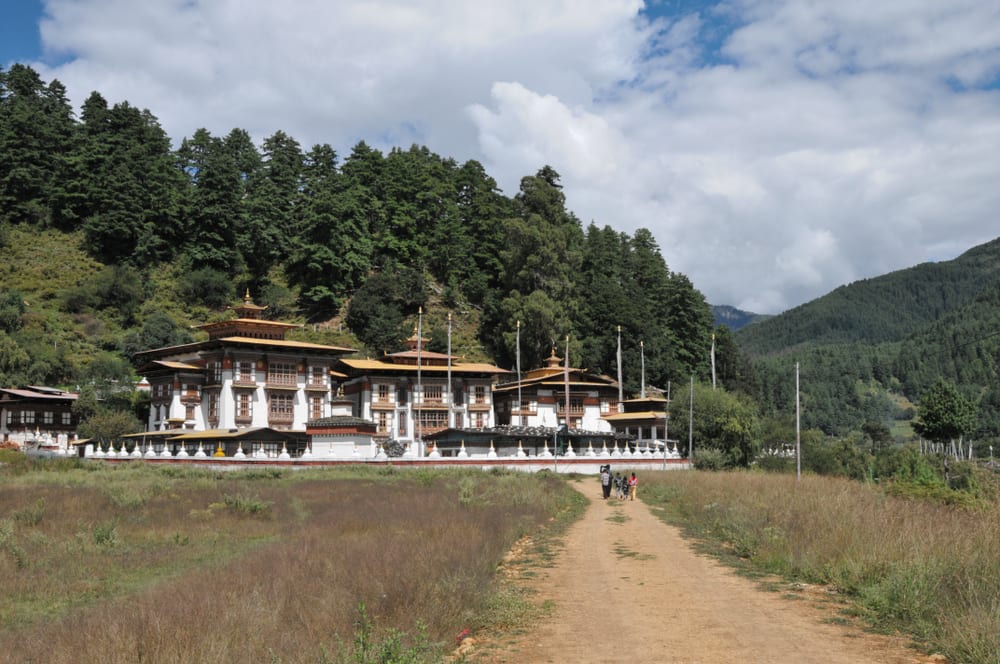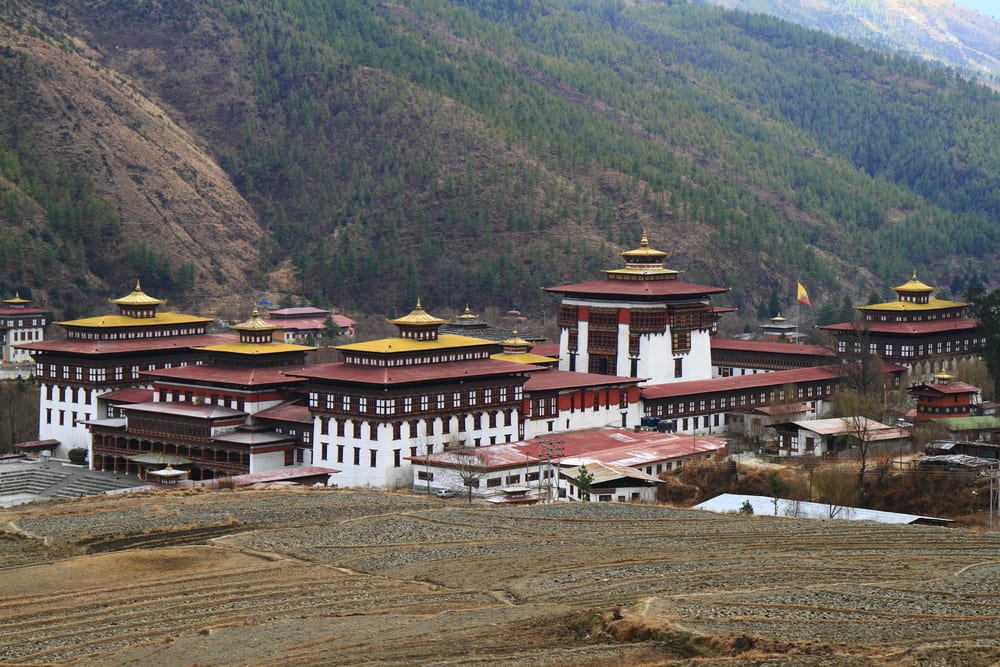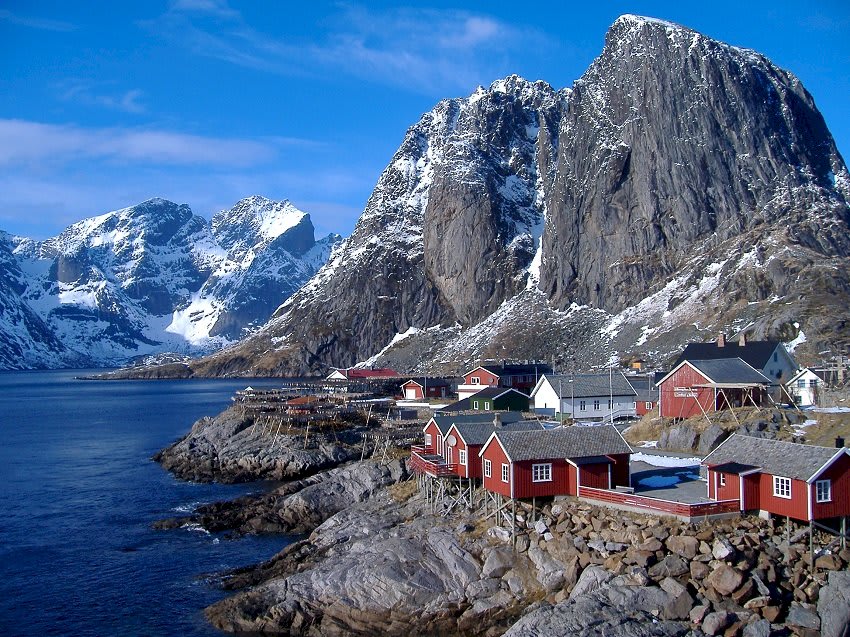As our plane begins its descent towards the small airstrip at Paro International Airport, the Captain asked us to brace ourselves for what was expected to be a very bumpy landing, and I was painfully reminded that this remote Himalayan airport was reputed to be so dangerous that only eight pilots in the world are qualified to land there.
Paro Airport in Bhutan is 1.5 miles above sea level and surrounded by the tortured topography of jagged mountains, with towering peaks of up to 18,000 ft tall. The treacherous runway is just 6,500 feet long – one of the few in the world shorter than their actual elevation above sea level. Until July 2011, just one airline, Drukair - Royal Bhutan Airlines, was allowed to use the facility.
Despite the perilous landing conditions, the views over the lush and verdant Paro Valley, with its sacred Buddhist temples, a scattering of historic buildings, pristine rivers and remote mountain villages, instantly remind you this is also one of the most beautiful countries in the Himalayas.
Nostalgic Flight
The short flight from Kathmandu in neighbouring Nepal, with Drukair’s new 48-seat, ATR 42-500 twin-turboprop, short-haul regional airliner took little over an hour, and being propeller-driven, provided what was unquestionably one of the most nostalgic scheduled flights I have ever had the good fortune to board, and possibly the most dramatic view of Himalayan scenery I have ever seen.
At this high altitude, flights into Paro are only allowed during the daylight hours and under visual meteorological conditions, in which the pilot must make his judgements by eye, rather than rely on instruments as would be the case in night flights.
The cool mountain air embraces us as we step off the plane in the tiny, dusty valley town of Paro, our faces immediately freshened from the stifling humidity of the cabin and anxieties of the hairy landing. Beyond the rudimentary airport buildings, and vision of the imposing Rinpung Dzong monastery, standing sentinel in the distance, the lush foliage of the Paro Valley shimmers in the bright morning sunlight, at once mesmerizingly beautiful and peaceful.
A Uniquely Distinct Country
Tucked away between China and India in the heart of the Himalayas, Bhutan remains a uniquely distinct country. Few explorers have been granted permission to visit this long-inaccessible Kingdom, now a democracy, where life quietly unfolds to the rhythm of traditions amidst the magnificent, unspoilt landscape.
Bhutan, officially the Kingdom of Bhutan, has been remarkably successful in preserving its Buddhist culture while also drawing on the benefits of Western know-how, such as environmental conservation and improvements in public health and education.
Culture
This landlocked country was influenced early on by Tibetan civilization, but over time it developed its own original culture. Today Bhutan’s culture is unique in its characteristics and achievements in ecology, spirituality, politics, architecture, textiles and other crafts, and remains clearly distinct from other Himalayan regions. It continues to be a place of stability and serenity within a part of the world that is increasingly conflicted.
Bhutan – known to its people as Druk-Yul, ‘Land of the Thunder Dragon’ – is pivotally positioned between those two Asian giants, India and China. To the north lies Tibet, along with the imposing barrier of the Himalayas, while extending to the east, south and west are the Indian states of Arunachal Pradesh, Assam, West Bengal and Sikkim.
Geography
Much of the land is covered in lush and varied forests. Broad-leaf trees and conifers occupy three-quarters of its 46,500 square kilometres, which is roughly the size of Switzerland, and with an estimated population of only 700,000, it is one of the least populous nations in South Asia, second only to the Maldives. The verdant valleys and steep mountain slopes of the rich central zone are carpeted with a patchwork of rice paddies and fields of barley, wheat, millet and buckwheat.
Bhutan is situated on the same latitude as Morocco. Its climate is governed by monsoons which contribute to its extraordinary ecological diversity. From south to north, in the space of a mere 130 to 150 kilometres, weather conditions shift from semi-tropical to temperate (in the country’s central zone) to alpine. With its narrow plain of dense and often impenetrable jungle to the south and the Himalayan barrier to the north, the country has its own natural defences.
Bhutan - Central Zone
Bhutan’s central zone is its cultural cradle and the historical heartland of its people. The region is composed of a series of basins, whose inhabitants were totally economically self-sustaining until fifty years ago, and from west to east there is a string of glorious valleys, like reliquaries enshrining the many spiritual and artistic aspects of Bhutanese culture. To the west lie the town of Paro, and Thimphu, the capital of Bhutan and its largest city, and, to the centre and east of the country, the rich valleys of Bumthang, Trongsar and Lhuntse situated at between 2,000 and 3,500 metres.
Further to the east, there are the low-lying valleys of Tashigang, Merak and Sakteng, home to the Sar-chupa, the ‘People of the East’, who speak a different language from Dzongkha, a Sino-Tibetan language that is the Kingdom of Bhutan’s sole official and national language, spoken by over half a million people.
North Bhutan
North Bhutan is a series of towering peaks rising from 3,000 metres to over 7,000 metres. Jomolhari, sometimes known as “the bride of Kangchenjunga”, is the highest peak in Bhutan, and reaches 7,326 metres, capped with the eternal snows of the Great Himalaya. Bhutan’s semi-nomadic yak-herders live on these northern slopes, enduring the rigours of the Himalayan climate and bringing their herds to graze in spring at between 4,000 and 5,000 metres.
Flora
The Tibetan name for Bhutan, Lhojong Menjong, means ‘The Southern Valleys of Medicinal Herbs’ and the dense forests of these Himalayan foothills are rich in plant life known for their medicinal properties. The steep slopes shelter a number of rare and endangered species such as the Himalayan blue poppy (Meconopsis grandis), Bhutan’s national flower, as well as a great variety of beautiful orchids and rhododendrons. Most of the region – 26 percent of the country as a whole – has been designated as a national park, a further indication of how highly the Bhutanese government values and respects the environment.
Fauna
Bhutan is home to the elusive snow leopard, or ‘ounce’ (Panthera uncia), and the white-bellied or Himalayan musk deer (Moschus leucogaster), as well as numerous other species, and even tigers have been photographed here at an altitude of 4,000 metres. The wealth of Bhutan’s diverse flora and fauna, its exceptional forest cover, the abundance of clear-flowing rivers, generous rainfall, and its small population, are all resources that have played an important role in the evolution of Bhutan’s rich cultural heritage and represent major economic assets for the country today.
History and Sprituality
In Bhutan, history and spirituality are indissolubly linked. It is said that there, ‘the earth is Buddhist and the sky is Buddhist’. The mountains are seen by the Bhutanese as ‘recumbent elephants’, ‘proudly poised lions’ and ‘garuda birds taking flight’. The plains are lotus flowers with their eight petals unfolded; the little cut-out pieces of sky in a rock face are ‘gakyil’, “circles of joy”, or ‘phurba’, triangular daggers. The lakes are shaped like horns of plenty or cups of ambrosia. The whole landscape is sacred. Every valley is a site of pilgrimage and every rock, cave, forest and river has a history. In one place, a hermit meditated; in another, a spiritual master left his footprint on a rock; in yet another lies the home of a guardian spirit of the earth.
Many of these sites are barely known outside the valley where they are located, while others have a quasi-mythical reputation throughout the world of Himalayan Buddhism. Padmasambhava, also known as Guru Rinpoche, the 8th century Indian Buddhist master, is said to have concealed a great many spiritual treasures at Paro Taktsang, the prominent Himalayan Buddhist sacred site and temple complex located in the cliffside of the Upper Paro Valley.
The Tiger's Lair
Famously known as ‘The Tiger’s Lair’, the monastery clings to a cliff, 3,120 metres above sea level and is one of the most imposing visitor attractions in Bhutan. Small wonder, during their Royal visit to India and Bhutan in 2016, the Duke and Duchess of Cambridge trekked to the summit of this famous monastery, going one better than the Duke’s father, Prince Charles, who on a 1998 trip broke off his hike to the sacred site to paint a watercolour of the complex from afar.
Several months after Prince Charles visited Paro Taktsang in 1998, a fire broke out in the monastery and it was completely destroyed: the temple being hard to access and emergency assistance was near impossible. However, Bhutan’s own popular monarch, His Majesty, the King Jigme Khesar Namgyel Wangchuck, the fifth ruler in his family to take possession of the crown, immediately ordered the reconstruction of this national treasure, and it has since been restored to its former splendour.
My own three-hour trek to the monastery at Paro Taktsang was an unforgettable experience, thanks largely to its isolated location and the breathtaking views of the surrounding mountains and emerald green valleys. Looking at the complex from the bottom of the cliff, it seems almost impossible to reach the monastery. In fact, there are three mountain paths leading to the sacred site. The first path is a trail passing through the pine forest and decorated with brightly-coloured bannerettes symbolizing protection from evil forces, positive energy, vitality and good luck. The other two paths pass through the central plateau, called “a hundred thousand fairies plateau”.
Kurje Lhakhang
Kurje Lhakhang, at the heart of Bhutan in the Bumthang Valley, is another major pilgrimage site. This imposing 8th century monastery is the final resting place of the remains of the first three Kings of Bhutan and is well worth a visit. Mönka Nering Senge Dzong, ‘The Fortress of the Lion’, will take any visitor to this holy site on a journey of spiritual immersion. Blessed by Padmasambhava and his female disciple Yeshe Tosogyal, this renowned place of worship is a small plateau ringed with rocky peaks and glaciers, located at over 4,000 metres, which takes several days to reach by walking along boggy paths in semi-tropical rain forests, but living as I do on the west coast of Ireland, I had no hesitation in joining a trek to this sacred site, for a brisk walk through a peat bog in search of a nesting bird or rare butterfly has become an almost daily ritual for me in recent years, although in County Kerry, I am very unlikely to encounter birds such as the Black-necked crane (Grus nigricollis), Great hornbill (Buceros bicornis), or the beautiful Satyr tragopan (Tragopan satyra).
A veritable paradise
Bhutan is a veritable paradise for bird lovers and ornithologists. Over 670 species of birds have been recorded here and many more are yet to be discovered. Around 50 species of the known birds are winter migrants, and these include ducks, waders, numerous birds of prey, thrushes, warblers, flycatchers, bee-eaters, finches and buntings.
Buddhism
The values of Buddhism and the natural world are deeply imbedded in the minds of the Bhutanese people. Some of the larger monasteries, like the one at Thimphu, house more than a thousand monks. Every hilltop has its little temple or shrine surrounded by prayer flags fluttering in the wind and the mountain streams keep the prayer wheels turning night and day. There are hermitages scattered throughout the mountains and the forests, where many monks, nuns and lay practitioners devote themselves to meditation. The religious calendar is filled with majestic ceremonies and sacred dance festivals and, since the principal monasteries celebrate the festival of the Tenth Day (tsechu) at different times in the year, the celebrations tend to be ongoing throughout the country, literally one after another.
Religion
Bhutan has two main religious schools, both derived from Tibetan Buddhism: the Drukpa Kagyu tradition, which is followed by virtually all state-run monasteries, and the Nyingma tradition, observed by a large section of the population and of the independent monasteries.
Adventure Sports
There is so much to see and do in Bhutan, which is rapidly developing a reputation as a premier destination for adventure sports. Set as it is amongst the majestic Himalayas, the Kingdom is the perfect location for all manner of exciting outdoor activities including hiking, trekking, kayaking, mountain biking and fishing. Whether its rafting down crystal clear, glacier-fed rivers or trekking through lush, virgin forests, Bhutan offers a one-of-a-kind experience for travellers seeking adventure in an unspoiled and unexplored environment. All the necessary arrangements for these activities can be made through your local tour operator. They will provide you with well-trained and experienced guides to ensure your safety at all times.
Accommodation
A wide variety of accommodation is available in Bhutan ranging from luxurious 5-star hotels and mountain retreats, resorts and spas, to much smaller community-based boutique hotels, cosy little guest houses and “homestays” in traditional Bhutanese family homes and settings. However, the most distinctive characteristic of Bhutanese daily life is its mouth-watering cuisine but be prepared for its spiciness. Extremely hot chillies are an essential part of nearly every dish and are considered so important that most Bhutanese people would not enjoy a meal that was not spicy.
Food
Ema Datshi is among the most famous dishes in Bhutanese cuisine, and widely recognized as the national dish of Bhutan. It is a spicy mix of chillies, green beans, ferns, potatoes, mushrooms and a delicious local yak cheese known as Datshi, which is sometimes swapped for regular cheese. The dish is a staple of nearly every meal and can be found throughout the country.
A beautiful, yet mysterious place
Often referred to as the ‘Land of Happiness’ by its people, this secluded Himalayan idyll is one of the world’s most beautiful, yet mysterious places. Bhutan’s ancient cultural traditions have continued to grow despite the current technological restructuring. Only since the mid 1970’s technology has come to this otherwise sacred land. Small wonder many notable mountaineers, such as Eric Shipton, Chris Bonington, Joe Tasker and Dougal Haston, fondly named this blessed place the ‘Kingdom of the Sky’.
Bhutan has since become the ultimate tourist destination for adventurers, spiritual awakenings, and serene visages. Should you find yourself in South Asia over the coming months, I would urge you to pay a visit, for you’ll be well rewarded for including the Kingdom of Bhutan in your itinerary. This place is quite simply a land where solitude is sublime.

